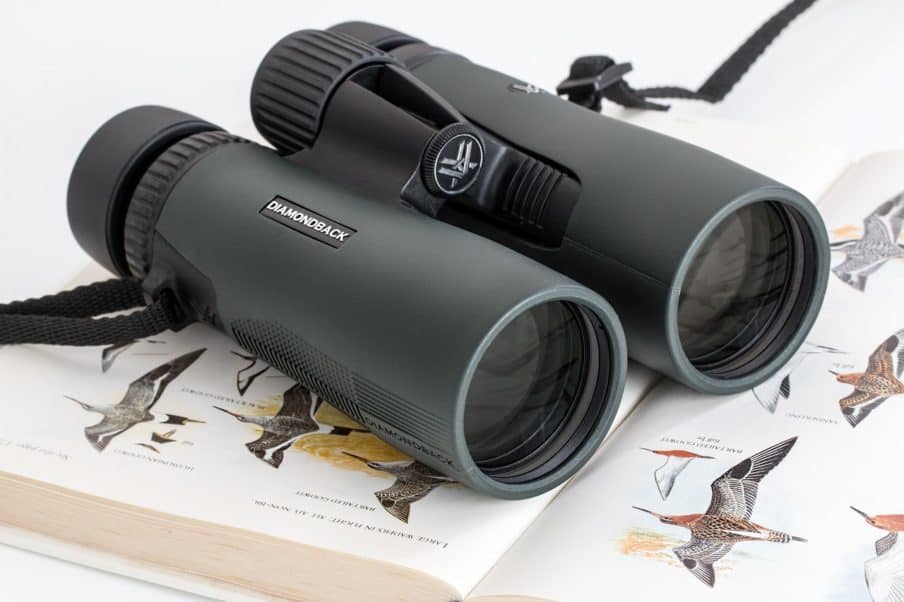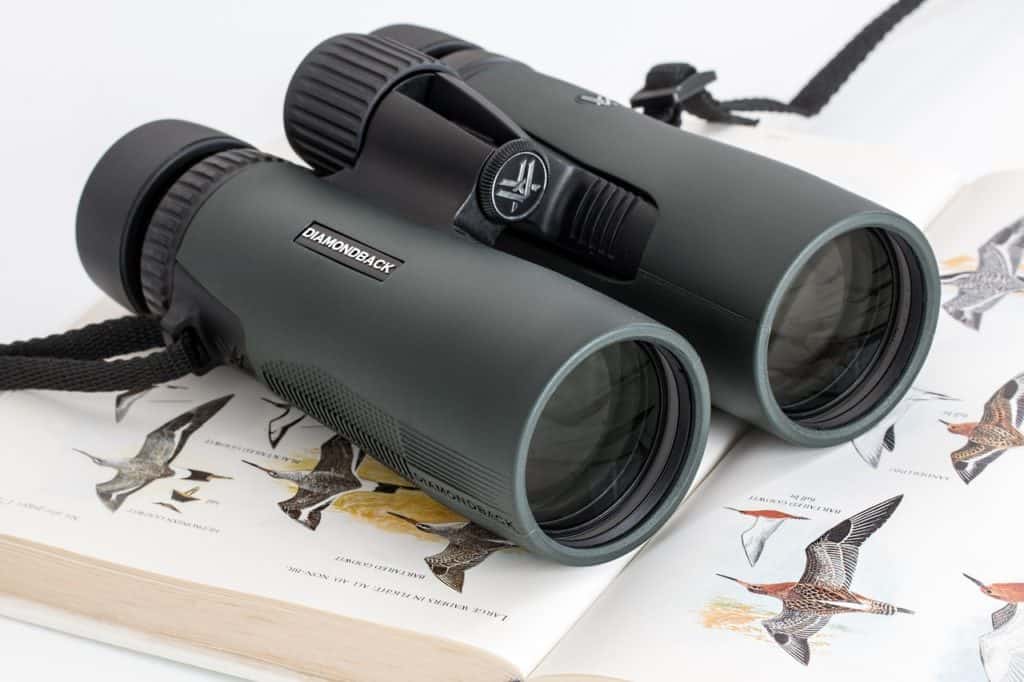
Need a good set of binoculars for your trip? Here are the 5 best compact binoculars for hikers, birders, and adventurers. Our buying guide covers a few factors you need to consider before you buy compact binoculars for your vacation to Costa Rica.
Getting the Best Binoculars for the Money
Whether you are trekking in the Osa Peninsula or hiking the trails through one of Costa Rica other national parks, a pair of binoculars are very important. The bird and animal life is abundant – but it isn’t always super close.
While traveling in Costa Rica and the rest of Central America, it’s exciting to see the amazing wildlife and visit the prisitine waterfalls of places like la fortuna ,the beautiful beaches of Manuel Antonio, and amazing cityscapes. You won’t regret having quality binoculars (and camera gear) along the way.
In this post, I will give you some great choices and talk about which binoculars are the best for hiking, birding, and wildlife spotting.
I’ll also discuss which ones are capable of handling everything from hiking the Osa Peninsula (under that fierce equatorial sun), through to the dense jungle and the cloud forests in the highlands of places like Monteverde.
This Buyers Guide will cover the many factors to consider before you buy your binoculars. They include the different features, the best lenses and what all those dials, numbers and unfamiliar terms mean.
To save you some time, here’s my top pick – the best pair of compact binoculars for Costa Rica.
5 Best Compact Binoculars for Birding and Hiking
1. Zeiss Terra ED Compact Binocular
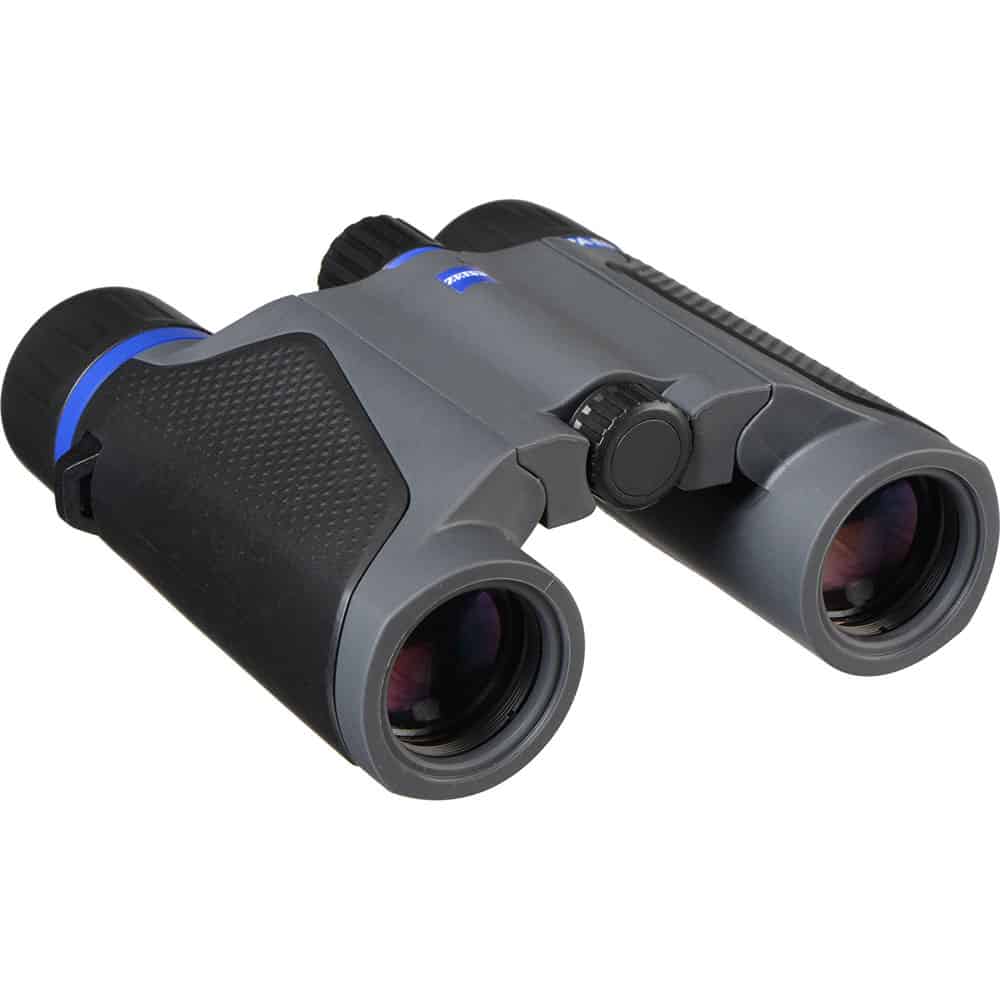
These binoculars have a fiberglass reinforced body, waterproof casing, and sturdy design means that Carl Zeiss is delivering nearly the perfect hiking binocular.
The Fully multi-coated lenses are hydrophobic and repel fog and water for clarity and precision in any conditions.
With all these features, it’s hard to know how Zeiss managed to pack it all into a 10.9-ounce package – among the lightest compact binoculars in this list.
- Magnification: 8X
- Objective Lens: 32mm
- FOV @ 1000 Yards: 390 ft
- Weight: 310g / 10.9 oz
- Other: Schott ED glass
You can pick up a pair from Amazon.
2. Vortex Optics Diamondback Roof Prism Binoculars

Vortex is known to makes several great models of binoculars equipped to deal with the difficulties of hiking and outdoor use.
These 10x magnification binoculars are equipped with 32mm objective lenses for low light viewing and a lifetime warranty.
Be cautious when choosing a high zoom binocular at 10x or above as the magnification can exacerbate any small movements in an unsteady hand.
Vortex Optics Viper HD Roof Prism Binocular at a Glance:
- Magnification: 10X
- Objective Lens: 32mm
- FOV @ 1000 Yards: 340 ft
- Weight: 436g / 15.4oz
- Other: XR anti-reflective lens coating
You can pick up a pair from Amazon.
3. Swarovski CL Pocket Binoculars

Swarovski is best known for its high-quality optics. And this best pocket binocular is one of the best compact binocular for birding from Swarovski company.
These 8x magnification binoculars are equipped with 25mm objective lenses for low light viewing and a lifetime warranty.
- Magnification: 8X
- Objective Lens: 25mm
- FOV @ 1000 Yards: 357 ft
- Weight: 345g / 12.2oz
- Other: Water Proof up up 13ft
You can pick up a pair from Amazon.
4. Bushnell H20 8×42 Binoculars
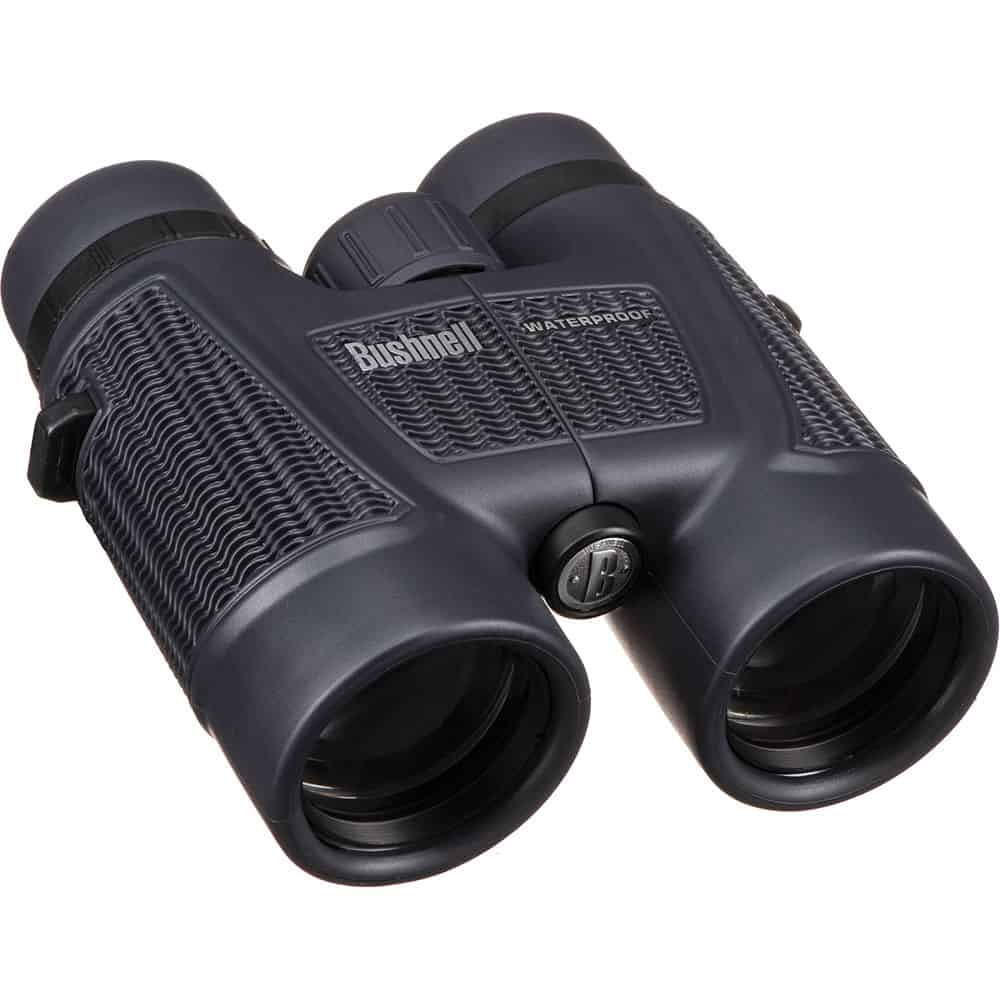
Compact, lightweight and able to comfortably fit into the palm of your hand, these little beauties pack a punch in their weight class. They are waterproof with an anti–slip grip making them durable and perfect for travel.
- Magnification: 8X
- Objective Lens: 42mm
- FOV @ 1000 Yards: 409 ft
- Weight: 708g / 25oz
- Other: Roof prism binocular offers a more compact footprint
You can pick up a pair from Amazon.
5. Athlon Optics Midas Roof Prism UHD Binoculars
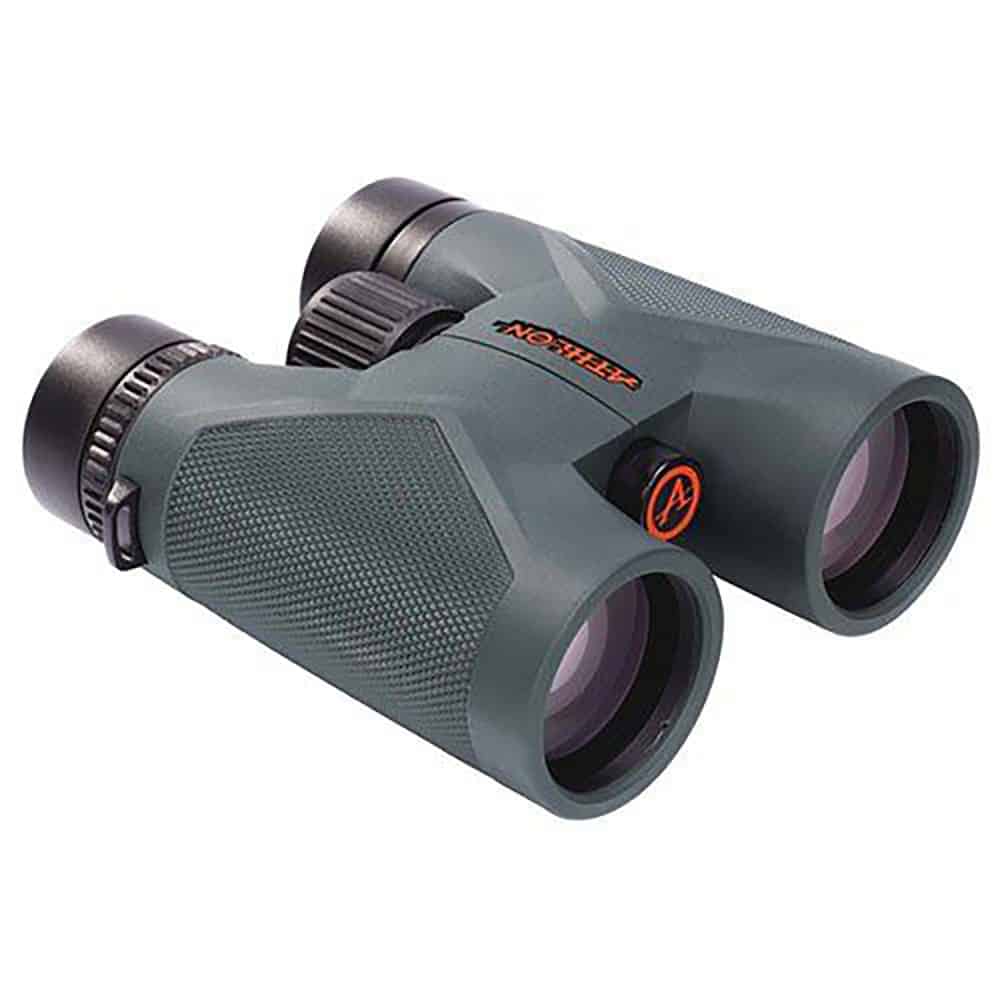
These binoculars are lightweight and slim with good image quality. They are also waterproof and resist to shock. Nice clarity and brightness with a wide field of view. It also comes with a lens coating that protects them from scratches.
- Magnification: 8X
- Objective Lens: 42mm
- FOV @ 1010 Yards: 426 ft
- Weight: 708g / 25oz
- Other: Roof prism binocular offers a more compact footprint
You can pick up a pair from Amazon.
Binocular Basics – 6 Factors When Buying
Sizing
Basically, there are three main sizes for binoculars:
• Full size (Ex. 8×42)
• Mid-size (Ex. 7×35)
• Compact (Ex. 8×25)
I would suggest staying away from full and mid-sized binoculars for most hiking and situations where you will be carrying them for hours on end, (for example in Monteverde), because they’re bulky, heavy, and often delicate.
Compact binoculars are the best at providing moderate viewing power in a tiny package. Their principal drawback is that they have features and are more uncomfortable during extended or concentrated use.
Magnification
Magnification is always shown as the first number in this set of numbers: 10×42. The second number is the objective lens diameter
Lens diameter is much more important than you might assume, however. bigger objective lenses are able to allow larger amounts of light more easily. This translates to a brighter, crisper, and more true view of your target, especially in low light conditions such as dawn and dusk
Field of View
FOV (field of view) refers to everything (the total area) you can see when you look through your binoculars.
Most binoculars will note a field of view, rated at 1,000 yards. This can sometimes be rated differently but usually manufacturers follow this standard.
Wider field of view is great for birding when looking for birds on the move. Narrow field of view is usually better for viewing stationary objects with high detail.
Unfortunately, their is always a trade off. Narrow field of view is more crisp but harder to find targets. Wider field of view is less focused but easier to view sweeping panoramas.
Lens Coating
UV treated multi coated lenses, extra low dispersion glass, and zigzag prisms will get you the best binoculars for the money.
These improve the central image you see by eliminating the harmful UV rays while the zigzag prism, also known as a porro-prism, allow more light giving a crisper, clearer image with more detail.
A roof prism is also good but the straight prism doesn’t collect quite as much light as the zigzag prisms and can provide a duller image.
Water Proofing
In Costa Rica the morning dew, mist or fog, or any moisture for that matter whether it comes from a light sun shower to a torrential downpour ( think rainforest) through to vapor in the air, is disastrous if it can penetrate your binoculars. It will cause fogging, you won’t be able to see anything and the binoculars will be useless.
I’d recommend getting waterproof binoculars for your trip to Costa Rica as they will withstand any moisture that comes your way, or an accidental drop in a stream as you cross. That way you’ll have clear vision the whole time and won’t miss anything.
Types of Glass in Binoculars
BAK-4 Glass – A very common glass used in quality optics for binoculars. It has a low refractive index and resistance to chemical and environmental damage.
ED Glass – Extra-Low Dispersion is widely used in optics in high end binoculars to provide clarity and crisp views. This is especially important at higher magnifications to reduce chromatic aberration.
Schott ED Glass – This is a proprietary glass made by Schott Optics that has the lowest chromatic aberration of any glass and found in the Zeiss ED Binoculars.

